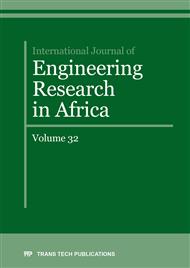p.1
p.11
p.18
p.25
p.36
p.53
p.62
p.76
p.86
Property Evaluation of Nitrided Layers of Porous Sintered Iron
Abstract:
Powder metallurgy was mainly used to produce automobile parts such as beds self-lubricating bearings, and gear wheels. In order to investigate the effect of porosity on the mechanical and tribological properties of sintered steel, specimens with 10%, 20%, and 30% porosity were produced on samples of parallelepipedic form, with technical of iron powders that has been used in a large industrial area. Sintering was carried out at 1100 ° C for 2 hours in an argon atmosphere. Metallographic studies such as pore formation, saturated area, and the nitrided layer analyses were performed by microscopy and optical microscopy. It was found that the irregular pore formation tendencies increase with an increase in porosity (%). Furthermore, an increase in porosity has proven to decrease the mechanical properties and increase the wear trace area and the friction coefficient of sintered steel.
Info:
Periodical:
Pages:
11-17
Citation:
Online since:
September 2017
Keywords:
Price:
Сopyright:
© 2017 Trans Tech Publications Ltd. All Rights Reserved
Share:
Citation:


